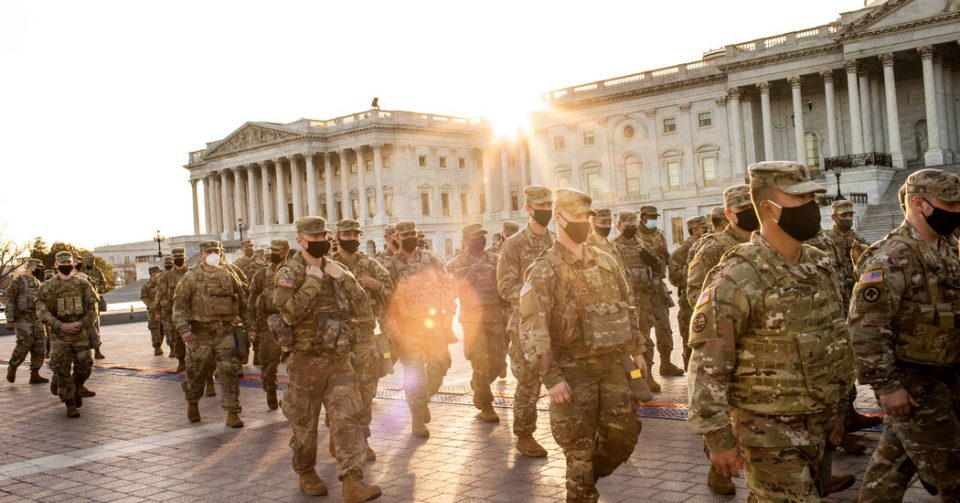
Mr. Sanford’s arrest was unrelated to the death of a Capitol Police officer, Brian Sicknick, who was said to have been struck in the head by a fire extinguisher, according to two law enforcement officials.
Later in the day, charges were unsealed against a man accused of beating a police officer on the Capitol grounds with a flagpole flying the American flag. According to a criminal complaint, the man, Peter Stager, claimed he thought the victim of the assault was a member of Antifa, the loose collective of leftist activists who have often sparred with far-right protesters, even though the words “Metropolitan Police” were clearly written on the officer’s uniform.
“Everybody in there is a treasonous traitor,” Mr. Stager said, in an apparent reference to the Capitol, according to a video obtained by the F.B.I. “Death is the only remedy for what’s in that building.”
Even as they pursued new leads and suspects, federal investigators also sought to verify an incendiary charge raised this week by several lawmakers: that some members of Congress had helped coordinate the attack.
On Wednesday, Representative Mikie Sherrill, a New Jersey Democrat and a former Navy pilot, called for an investigation, with more than 30 of her colleagues, into what they described as “suspicious” visits by outside groups to the Capitol on the day before the riot at a time when most tours were restricted because of the coronavirus pandemic. On Thursday, another lawmaker, Representative Mary Gay Scanlon, Democrat of Pennsylvania, said she had personally witnessed a tour of the building before the Jan. 6 attack by people who were “Trump supporters.”
A law enforcement official said investigators had yet to discover any evidence that members of Congress were involved in helping plan the attack, and cautioned that the inquiry was vast and that all leads needed to be carefully vetted.
The flurry of arrests and investigations added an air of nervous activity to a city that already seemed to be under siege. The area around the National Mall on Thursday was crammed with military vehicles and cut off from its surroundings by imposing lengths of metal fencing, creating what the Secret Service agent in charge of inaugural security called “a bubble that is safe and secure.”


